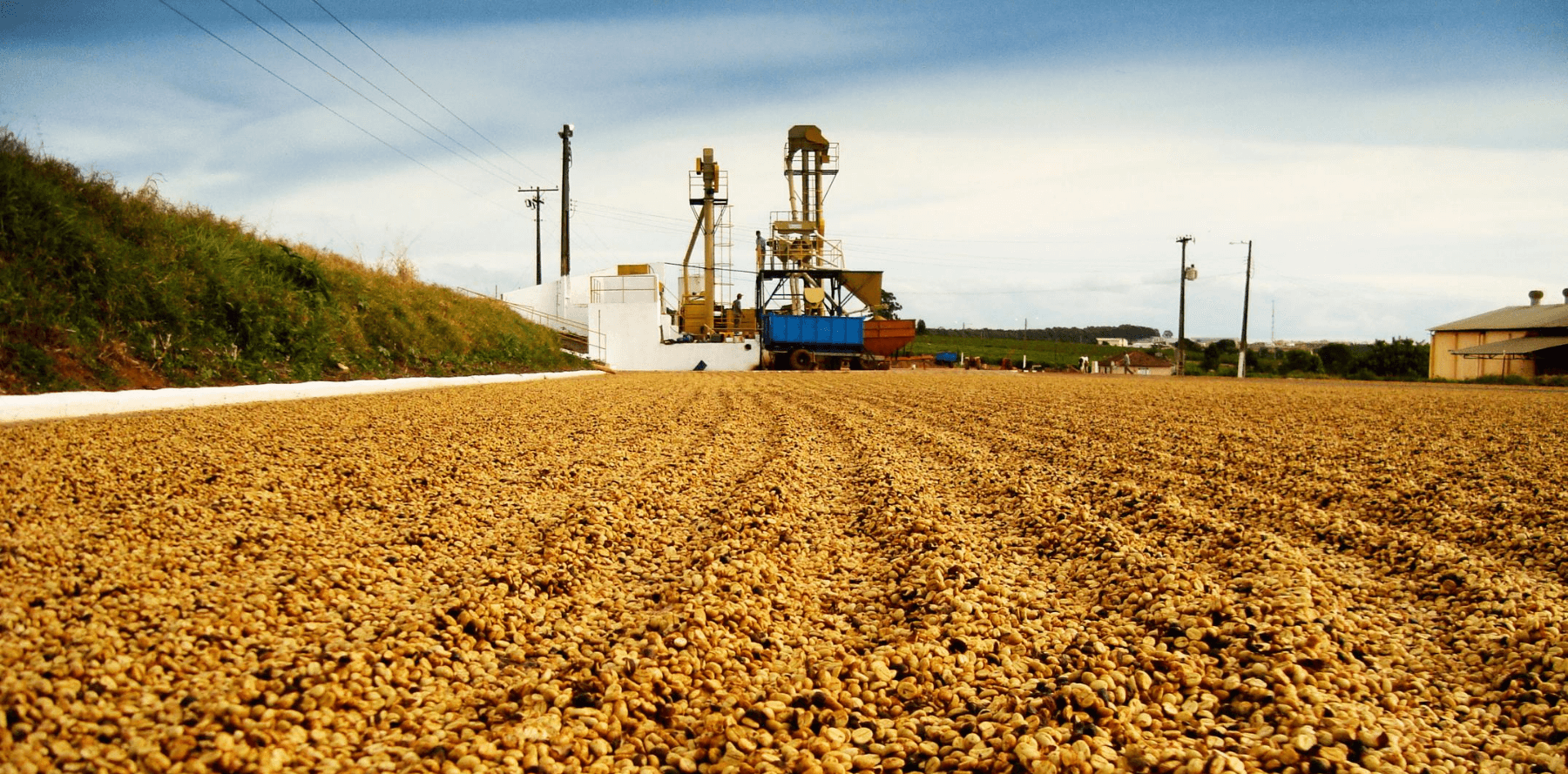Brazil is the largest producer of coffee in the world and it has been like this for the last 150 years. The coffee industry of Brazil is huge and incredibly diverse. You can find everything from bottom-of-the-barrel commodity coffee to world-stunning specialty coffee.
There are several regions that grow coffee in Brazil. An estimated 300,000 coffee plantations are spread across 13 states of Brazil.
Among them, Rio Minas in Brazil in the state of Minas Gerais is the home to high-quality Arabica coffee.
The main forms in which Brazilian coffee is exported are Ground & Roasted Coffee, Soluble Coffee, Green Coffee, and Coffee residues.
The majority of coffee produced (around 80%), in Brazil is of the Arabica variety. May to August is the harvest season.
History of Brazilian Coffee
Coffee is not native to Brazil. This might come as a surprising fact but the first coffee plantation in Brazil is said to be done by a lieutenant colonel named Francisco de Melo Palhelta. The Portuguese were looking to delve into the coffee industry for some time. But the governor of neighboring French Guiana was not willing to share the seeds.
While Palheta was on a diplomatic mission, he seduced the Governor’s wife and she presented him with a bouquet spiked with coffee seeds. And he managed to smuggle the seeds across the borders and planted the seeds in 1727.
The following years saw a quick spread and spike in the production of coffee across the country. By 1840, Brazil had become the greatest player in the world coffee market.
Major Coffee Growing Regions in Brazil
Brazil’s coffee-growing regions are spread across 13 states. But most of the Brazilian coffee is grown in the southeastern region across five states- Bahia, Minas Gerais, Parana, Sao Paulo, and Espirito Santo.
Minas Gerais
With around half of the total coffee grown in Minas Gerais, this is the most important coffee-growing state of Brazil. This is the home to the country’s most famous specialty coffee due to the rich soil and higher elevation that this region offers.
The varieties of coffee grown in the region are Catutai, Obata, Icatu, and Mundo Novo.
There are four major growing regions in the Minas Gerais:
Cerrado de Minas: This region is at a higher elevation (800 to 3000) meters and the weather here (humid summers and dry winters) makes it suitable to produce high-quality specialty coffees. The characteristic traits of coffee grown here are that they are more acidic and mildly sweet. Cerrado de Minas is the first region to be awarded the Designation of Origin status.
Chapada de Minas: The landscape of this region is diverse. Often the highland regions are divided by the valleys. This region sees a high level of mechanized production and the varieties of coffee grown here are Catutai and Mundo Novo.
Matas de Minas: The area is noted for its warm and humid temperature, and the landscape of this region is rather uneven. Home to mostly smaller farms, the varietals that are grown here are often sweet and chocolaty or caramel in notes.
Sul de Minas: The temperature of this region is mild and the average elevation is about 1000 meters. These climatic factors make it suitable for coffee growth. 30% of the country’s total coffee production comes from this region.
Apart from Minas Gerais, the other growing regions are Espirito Santo, Sao Paulo, and Bahia.
So we see that Brazil has a rich and storied history in regards to coffee and the climatic conditions make it suitable for huge growth. 13, i.e. half of the states of Brazil have coffee plantations, making Brazil a major player in the world coffee market.
Minas de Gerais is the most important coffee-growing region and Rio Minas in Brazil in this state produces high-quality Arabica coffee, superior in taste and flavor.










